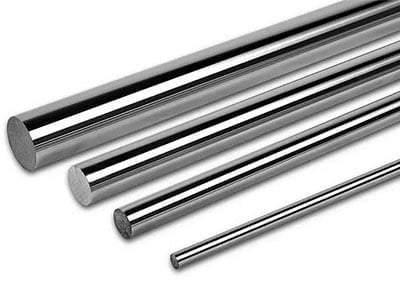Introduction

Stainless steel is a versatile and widely used material in various industries, renowned for its corrosion resistance, durability, and aesthetic appeal. Stainless steel grades play a crucial role in determining the properties and performance of stainless steel products. In this comprehensive overview, we will delve into the intricacies of stainless steel grades, exploring their composition, characteristics, and applications.
The Basics of Stainless Steel Grades
What Are Stainless Steel Grades?
Stainless steel grades are classifications that categorize different compositions of stainless steel based on their chemical makeup and metallurgical properties. These grades help distinguish between various types of stainless steel and inform their suitability for specific applications.
Composition of Stainless Steel Grades
Stainless steel grades typically consist of a combination of iron, chromium, nickel, and other alloying elements. The composition of each grade varies, affecting its corrosion resistance, strength, and other mechanical properties.
Types of Stainless Steel Grades
Austenitic Stainless Steel Grades
Austenitic stainless steel grades, such as 304 and 316, are the most common types of stainless steel. They offer excellent corrosion resistance, high ductility, and good weldability, making them suitable for a wide range of applications, including food processing, chemical processing, and medical devices.
Ferritic Stainless Steel Grades
Ferritic stainless steel grades, such as 430, contain higher levels of chromium and lower levels of nickel compared to austenitic grades. They offer good corrosion resistance in mildly corrosive environments and are often used in automotive trim, kitchen appliances, and architectural applications.
Martensitic Stainless Steel Grades
Martensitic stainless steel grades, such as 410 and 420, are known for their high strength, hardness, and wear resistance. They are commonly used in applications requiring components with excellent mechanical properties, such as cutlery, knives, and surgical instruments.
Applications of Stainless Steel Grades
Industrial Applications
Stainless steel grades find widespread use in various industrial sectors, including manufacturing, construction, and transportation. They are employed in the production of equipment, machinery, structural components, and infrastructure due to their durability and corrosion resistance.
Consumer Products
Stainless steel grades are prevalent in consumer products, ranging from kitchenware and appliances to jewelry and watches. Their hygienic properties, aesthetic appeal, and ease of maintenance make them a popular choice for everyday items used in households and personal accessories.
Table: Comparison of Common Stainless Steel Grades

| Grade | Composition | Corrosion Resistance | Strength | Applications |
|---|---|---|---|---|
| 304 | 18% chromium, 8% nickel | High | Medium | Food processing,chemical processing |
| 316 | 16% chromium, 10% nickel | Very high | Medium | Marine environments,medical implants |
| 430 | 17% chromium | Moderate | Medium | Automotive trim,kitchen appliances |
| 410 | 11.5% chromium | Moderate | High | Cutlery, knives,surgical instruments |
Conclusion
Stainless steel grades are integral to the versatility and performance of stainless steel, determining their suitability for various applications. By understanding the composition, characteristics, and applications of different stainless steel grades, manufacturers, engineers, and consumers can make informed decisions when selecting materials for their projects.
FAQ
What factors should I consider when choosing a stainless steel grade?
When selecting a stainless steel grade, consider factors such as corrosion resistance, strength, weldability, and cost. Assess the specific requirements of your application and choose a grade that best meets your needs in terms of performance and durability.
Are all stainless steel grades equally resistant to corrosion?
No, different stainless steel grades offer varying levels of corrosion resistance depending on their composition and metallurgical properties. Austenitic grades, such as 316, generally provide the highest corrosion resistance, while ferritic and martensitic grades offer moderate to high corrosion resistance in specific environments.
Can stainless steel grades be customized for specific applications?
Yes, stainless steel grades can be customized through alloying elements and heat treatment to enhance specific properties such as corrosion resistance, strength, and hardness. Manufacturers often tailor stainless steel grades to meet the requirements of specialized applications in industries such as aerospace, automotive, and healthcare.
How do I identify the grade of stainless steel?
Stainless steel grades are typically identified using a standardized numbering system, such as the SAE (Society of Automotive Engineers) or AISI (American Iron and Steel Institute) designation. Additionally, stainless steel products may be marked with grade codes or symbols for easy identification and traceability.
